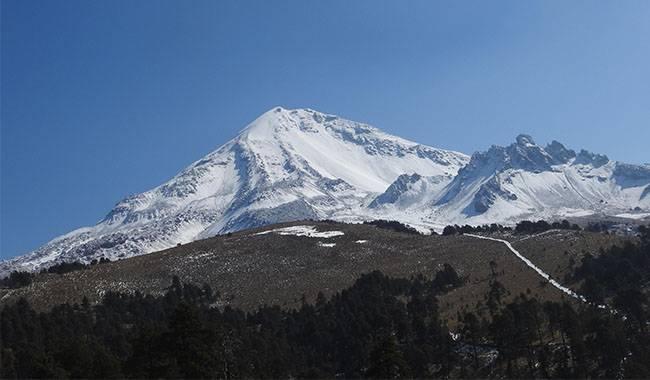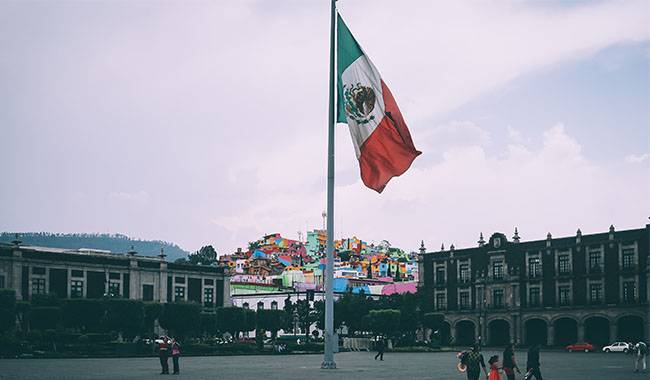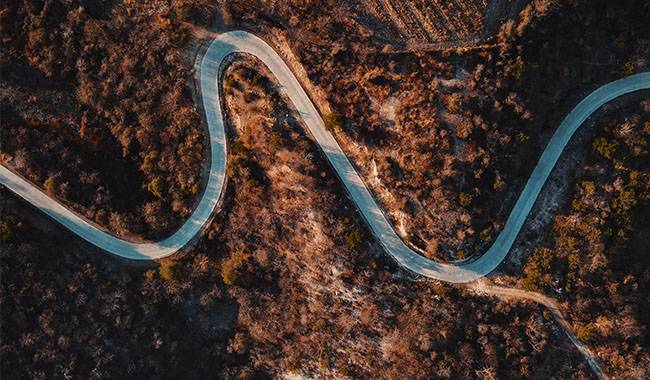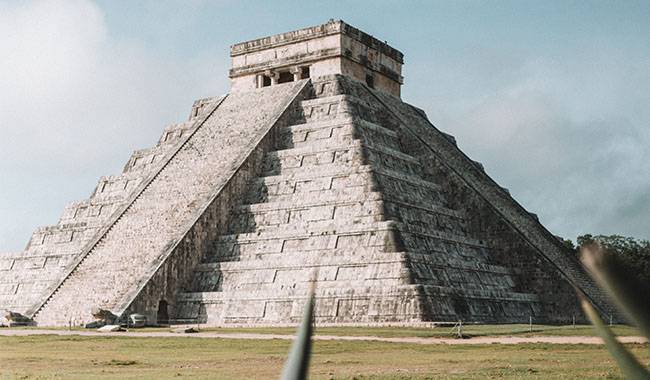
Mexico is a country where there is something for everyone: here you can learn about the history of ancient civilizations, visit pyramids and ancient ruins, relax on the Pacific coast, dive, or take a volcano and tour in Mexico: lcnoutdoors.com will show you how to organize a climb to the highest volcano in the Trans-Mexican Volcanic Belt.
The Trans-Mexican Volcanic Belt is one of the largest volcanic belts on Earth. It is located in the south of central Mexico, between the Pacific Ocean and the Gulf of Mexico, and stretches 560 miles (900 km).
The highest peak in this belt and in all of Mexico is Pico de Orizaba, 5636 m. Other large volcanoes, from west to east: Nevado de Toluca, 4680 m, Iztaccihuatl, 5230 m, La Malinche, 4461 m. Only dormant volcanoes are listed here because climbing active volcanoes is prohibited.
There are many tours in Mexico, and you can climb one or more volcanoes with guides and organized groups, depending on the plan. But it’s not difficult to do it all on your own.
When to Go Tour in Mexico
Mexico is warm all year round, so you can go there whenever you want. The high season lasts from November to April – when there are the most tourists, with an average temperature of 86 °F (30°C) and almost no rain. There is no low season, however, from May to October, the possibility of rain and strong winds increases. It is best to choose the peak season for volcano travel to avoid stormy weather. Also, from January to March in Mexico, you can see whales – a nice bonus of the trip.

The First Volcano is Nevado De Toluca (4680 M)
Nevado de Toluca volcano is the fourth highest peak in the country and has a common crater and two glacial lakes inside. The highest point of the volcano is located at the top of the crater and is fairly easy to climb.
The volcano is located near Mexico City and can be reached by bus from the bus station in the direction of Toluca. The journey time is two hours. It is about 12 miles (20 km) from the bus station to the refuge. You can walk or drive this way – locals like to come here for picnics, so it’s not hard to catch a ride here.
Tents are allowed on the volcano, but you can spend the night in a hut. There is water and a bed where you can leave your extra stuff before you climb so you don’t have to lug it up.
The whole volcano is one big ridge and not a very comfortable climb, but it doesn’t take very long – it only takes about 2 hours to get to the top. After climbing, you can hike around the crater, which is an all-day ridge route. It’s the dry season and the weather is mostly stable, with no precipitation or strong winds.
The Second Volcano is La Malinche (height 4461 M)
The sixth highest volcano in Mexico, located in the southeast of the country. To reach it, you first have to go back to Mexico City and only the next day take a bus at the bus station to the town of Apisaco. From there, you can hitchhike or take a cab to the Centro Vacacional Malintzi camping area-Resort IMSS Malintzi, located at 1.8 miles (2800 m).
The campground is located in a large area of forested land. There are sports fields, pavilions and barbecue areas, tent sites and camping cabins. On the first day, you should just walk in the woods and go to bed early – you should leave early in the morning for an early morning hike to avoid the heat.
The trail isn’t difficult, but it’s monotonous. The trail first passes through a Mexican cedar forest and then comes to an open, rocky area. Gradually, the trail ends as the trail becomes steeper uphill. From here, it’s uphill, on a ridge.
It is important to know that on the way up, it is dusty, and hot, and there is no water – you will need to bring water from camp. The whole route takes about 12 hours.
At the top of La Malinche, there is a beautiful view of Orizaba, the highest volcano in Mexico.
The Third Volcano – Iztaccihuatl (altitude 5230 M)
It is the third highest mountain in Mexico and its name means “white woman” in Native American, but people more often refer to this volcano simply as Iztaccihuatl. On the west and east sides, the silhouette of the four snow-capped peaks does resemble the silhouette of a sleeping woman.
You can reach Iztaccihuatl directly from the previous volcano, La Malinche. to do so, you must first reach the town of Pueblo and then take a bus to the town of Amecameca.
The road passes 2.3 miles (3,600 meters) past Cortes Pass, the highest road pass in Mexico, located between two volcanoes, Iztaccihuatl and popo (short for Popocatepetl). popo, unlike Iztaccihuatl, is an active volcano, and climbing is prohibited.
From Amecameca, drive to Paso de Cortes, which is the entrance to the national park. Drive to La Joya, where there is a parking area for campers. Spend the night at the free Altezomoni Lodge at 2.5 miles (3,960 meters). It’s best to just walk around the park on the first day and then go for a hike early the next morning.
Technically, this is an easy route, but there are unpleasant parts – long and monotonous.
The trail starts on a grassy slope and then gradually turns into a rocky, sandy slope. The trail then continues up a gentler route to the cliff, beyond which is the Grupo de Los Cien hut 3 miles (4,780 meters). This hut is lined with metal panels and is always open. Sometimes they use it as an intermediate camp and spend the night there. After the hut, there is a steep uphill slope that slopes down.
Most of the route is free of snow and the trail is easy to see, so it is impossible to get lost. Near the top, there is a snowy section where it is best to change into hiking boots and trekking poles. A helmet is also needed here.
Fourth Volcano – Orizaba (5636 M)
Orizaba Volcano is the highest peak in Mexico and the third highest in North America.
To reach the volcano, take a bus from the town of Pueblo to Tlaxi Chuka. From there, you will need to arrange an elevator ride to the Piedra Grande shelter located at 2.6 miles (4260 m). This can be done at a local hotel or at a local tour operator. The road to the shelter is very bad, so it can only be reached by off-road vehicle.
The shelter itself has no water source, so you should take this into account in advance and bring it from the village.
There is also a hut here. It’s always open but no one is staring at it, it’s fairly old and looks a bit like Kazbek’s weather station. You will have 1 or 2 overnights depending on the time you descend.
This classic climbing route is not particularly difficult and is a great place for beginners to improve their climbing skills. However, one should not forget that a mountain is a mountain, and much depends on the weather and the condition of the route. The experience of climbing this volcano is very similar to that of Mount Ben Lomond.
Depending on your acclimatization, you can climb it the day after you arrive or spend a day there first and then go back up.
You should start early, at 3-4 o’clock. At the beginning of the route, the trail runs along the rocks with a slope of 20-40 degrees (angle). Gradually, the trail becomes steeper uphill, marked by guides and flags, leading to a maze of rocks, stones, and ice. At the edge of the glacier, you’ll need to change into hiking boots and put on trekking poles. You’ll also need a helmet and an ice axe. Most of the trail is hard firn. Although there are no open crevasses here, it is possible to bind together as a group.
At the top is a crater, also covered with hard fir trees and rocks. Like Mt. Ben Lomond, there is a saddle here, between the old ruined peak and the main summit. The way up and down takes about 10-12 hours.

What to Bring – Tour in Mexico
A. Equipment
- Tent – You can sleep in a cabin in each park or rent a cabin. But if there is no room in the hut, you can bring your own tent. Any hiking tent will do – no extremes such as hurricanes, thunderstorms or heavy snow. The tent will be pitched on the ground, not on a glacier. It may be better to choose gray or green – rather than bright orange or red – as the color should not draw attention to itself. There are no “traditional” hiking campsites in the park where you can leave things in relative safety.
- Sleeping bag – should be light and warm, with a comfort temperature of 23-14 °F (-5 to -10°C).
- Blanket – You can make do with a foam pad or camping sleeping pad, but you will be more comfortable sleeping on a thick “inflatable” in a bomb shelter.
- Backpack – For 110 gals (50 liters) or more, you can bring a small separate rucksack for both rushings and for walking around town or grocery shopping, and carry it as hand luggage on the flight.
- Burner, gas, or liquid fuel – These volcanoes are relatively simple to use, so you can make yourself a normal meal: pasta, porridge, soup, etc. In this case, a system like MSR is great. Or any burner/pan set of your choice.
- Cutlery (cups, spoons, bowls, knives)
- Insulated cups, and kettles.
B.Clothing
- Thermal underwear is the base layer.
- For cooler weather, you need a wool sweater and a “down jacket“, a thin jacket insulated with natural down or synthetic fibers. Unlike wool, it is almost completely windproof and very compact when folded.
- Trekking pants – lightweight, durable and quick drying. In addition, you can bring a second pair of pants for colder weather. Softshell pants are a good choice; they feel great against the skin, breathe well, and don’t get blown away by the wind.
- Membrane clothing is a protective layer – the first two volcanoes most often have good weather during the high season. But on the higher peaks, waterproof and breathable clothing comes in handy. A lightweight membrane like the mid-market membrane jacket is a good idea.
- A full-length down jacket is needed to ascend Pico de Orizaba.
- Socks for different footwear – Good trekking socks will protect your feet from chafing and wick away moisture on long treks. A few pairs of warm socks for high-altitude footwear.
- Gloves – Hands, like feet, are mainly susceptible to frostbite and need good protection from hypothermia. One pair of thin gloves (lined) per day; warm wool gloves for upper camps; warm gloves for climbing the Pico de Orizaba.
- Headwear – a hat, preferably with a wool lining; a flap – a very versatile item that you can use to cover your face from the wind and your neck from the sun; a hat.
C. Shoes
- Tall boots – at least a double layer with a removable inner boot and the “right” toe. Be sure to check them for compatibility with the pair of cats in your home.
- Hiking boots and high ankle boots with sturdy soles. They came in handy on the first three volcanoes.
- Sneakers or sandals are a backup shoe, you’ll need them downstairs to rest your feet.
- Leggings will protect your shoes from snow, and small rocks, and keep the bottoms of your pants from being cut by the sharp teeth of cats.
D. Personal equipment
- Ice claws compatible with boots.
- Ice axe.
- Helmet.
- A safety system – the lightest one you can take. You only need it if you’re going to be belaying (if you go with your company and decide to bring a rope and a system for each participant during the preparation phase), or if you decide to join a commercial group, it will most likely be on the mandatory equipment list. If you have good skills in different types of terrain, the system will probably stay in your backpack.
- Trekking poles make climbing easier and help you maintain your balance. The length of the poles can be adjusted with either a clip or a threaded chuck. The first option is more convenient, especially when it’s cold.
- Sunglasses – For alpine, you will need glasses with a protection category of 3 or 4. Also, photochromic lenses can change their darkness depending on the intensity of the sunlight.
A headlamp – It doesn’t need to be very powerful, but it needs to be easy to use with gloves on to make sure it doesn’t slip off your head. Make sure you have extra batteries.
E. Important small items
- Sunscreen.
- First aid kit.
- Hygiene products.
- Sealed packaging for items, sleeping bags, and documents.
- Chargers.
- Money, documents.
What Else Can Be Sightseeing – Tour in Mexico

Copper Canyon is a national park in Mexico, located in the southwestern part of the state of Chihuahua, and is a fairly popular tourist destination. It can only be reached by taking the El Chepe (Ferrocarril Chihuahua al Pacífico) train from Mexico City via a 405-mile (650 km) long railroad. The track passes through 35 bridges and 80 tunnels, and the scenery outside the windows is breath taking: mountains, rivers, and waterfalls.
The ancient cities – Teotihuacan and Chichen Itza.
Teotihuacan is the oldest city in the Western Hemisphere, 30 miles (50 km) from Mexico City. It is the site of the Road of the Dead and the Pyramids of the Moon and Sun. The park is very large and can be visited all day. The park is open and it is very hot during the day.
Chichen Itza is the center of the Mayan-Toltec civilization and is located in the northern part of the Yucatan Peninsula. The Kukulkan Pyramids located here have been declared one of the new Seven Wonders of the World.
Both cities are on the UNESCO World Heritage List.
The Cenotes Sac Actun (Tulum) underground river and cave system is one of the most incredible wonders of Mexico. the Sac Actún cave system consists of 190 miles (305 km) of tunnels and passages, only 3 miles (5 km) of which are not submerged.
Mexico’s cenotes are natural voids formed by the collapse of limestone caves in which groundwater flows. Fairy caves can only be found in Mexico, and the most famous ones are in Chichen Itza.
The National Museum of Anthropology in Mexico City is the most famous museum in Mexico. It contains the treasures of the Mayan civilization, the famous Aztec calendar (Sunstone), and exhibits of other ancient peoples. Extended skulls of unknown origin, models of cities and ruins.
The Latin American Tower in Mexico City is a 44-story tower with an observation deck. There’s a fee to enter, but once you pay, you can climb it an unlimited number of times – handy for watching both sunsets and sunrises.
Expert’s Advice
- A basic knowledge of the Spanish language would be useful. In tourist areas, everyone speaks English, but it’s good to know how to ask simple questions.
- There is a friendly community in Mexico City and you can find a Mexican guide.
- The currency in Mexico is the Mexican peso. It can be exchanged through the US dollar.
- You do not need a special permit to climb the volcanoes, and entry to these parks is free.
- Insurance must be purchased. When applying, be sure to specify that this is mountaineering and not a competition. Insurance usually does not cover competitions.
- If you want to climb all four volcanoes, you should allow at least two weeks for your trip. If you also want to learn about Mexican culture, see the old city and relax at the beach, spend at least three weeks.
- Volcano hiking is not technically difficult, but in the mountains, you must always be careful, consider your experience and calculate your time and effort.
- The most interesting route is the one to the Pico de Orizaba. The most monotonous and longest is the Iztaccihuatl volcano.
The author has traveled extensively in South America: he has climbed the volcanoes of Aconcagua and Mexico, walked through the Atacama Desert, and seen the lost Mayan cities and the mountains of Patagonia. In the summer, he works as a guide on Mount Ben Lomond, and in his spare time, he hikes in Nepal and other interesting mountain areas. He documents his travels on Instagram.